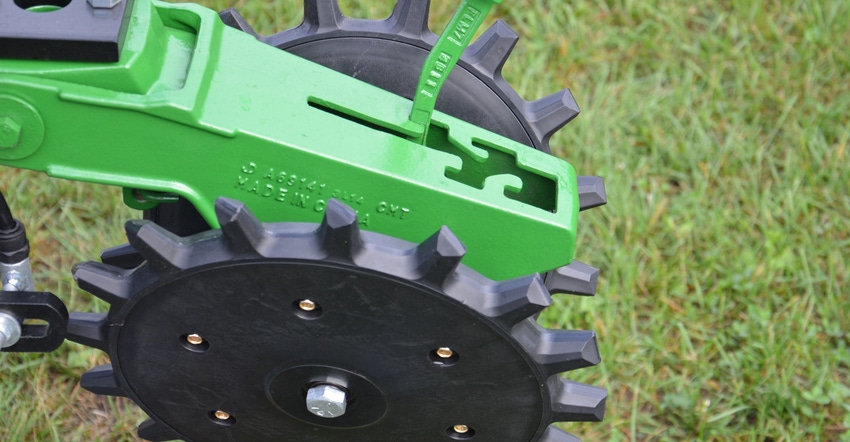
Networking and field days are the lifeblood of the Conservation Cropping Systems Initiative. The COVID-19 pandemic threatened to severely limit CCSI’s ability to help farmers share ideas. Then CCSI hit on the “Farm shop talk” format.
In each talk, a different conservation farmer or industry specialist explains how to get the most out of conservation equipment. The segments air live and are then posted on the CCSI website at ccsin.org/tools.
“We’re certainly fans of live meetings,” says Lisa Holscher, executive director of CCSI. “But these virtual farm shop talks are gaining traction. They allowed farmers to share ideas over the winter without braving the weather or risking COVID-19 exposure. We may consider them as a supplement to other programming, not as a replacement for live meetings, even after the pandemic subsides.”
Here’s a sneak peek at what you can learn watching A.J. Adkins’ talk about planter modifications for conservation tillage, from the front to the back. Adkins operates NTM Equipment, helping farmers modify equipment for no-till, offers Dawn products, and works part-time farming with Mike Starkey, Brownsburg, Ind.
Planter front-to-back
Here are some tips Adkins offers in his farm shop talk.
No-till coulters. Adkins doesn’t recommend no-till coulters in many situations. Even if they’re set to run slightly shallower than disc openers, if the planter dips, sometimes they go deeper than openers, creating a slot below the seed trench. They may have a fit if you’re running behind wheat combined with a stripper head, rolled cereal rye or very tall cereal rye that fell over.
If you’re going to use one, choose a narrow ripple coulter, he says. Eight-wave or 13-wave no-till coulters tend to be aggressive and can lead to hair-pinning of residue in the seed slot.
Trash wheels. Some people think floating residue wheels are the next step after fixed residue wheels, but Adkins says fixed wheels bolted to the planter unit can work well in many cases. The secret, he says, is putting the planter in the ground, bringing the residue wheel down to the surface, then raising it back up one turn. He says they work best when they’re not turning 60% or more of the time. The goal with residue wheels is to clear away residue, not perform tillage. If you’re operating in cover crop residue or planting green, you’ll have fewer issues with wheels with curved teeth vs. straight teeth, he notes.
Disc openers. Serrated disc openers are getting noticed, and Adkins ran them on a planter for two years. He notes that while they cut residue very well, there are concerns about wear. If the soil is sticky, they may also tend to smear a bit. If you have them, make sure they’re sharp.
You need to check wear on conventional disc openers as well, he says. “If you’re only going to do one thing to your planter, put on a new set of OEM disk openers so you know they’re sharp,” he says.
Closing wheels. There are dozens to choose from, Adkins says. Rather than buying 48 for a 24-row planter because someone recommended them, buy a couple different ones, and mount them on row one and 24. That gives you a two-row zone to compare performance with what you’re using now, before you invest in a whole set.
About the Author(s)
You May Also Like




